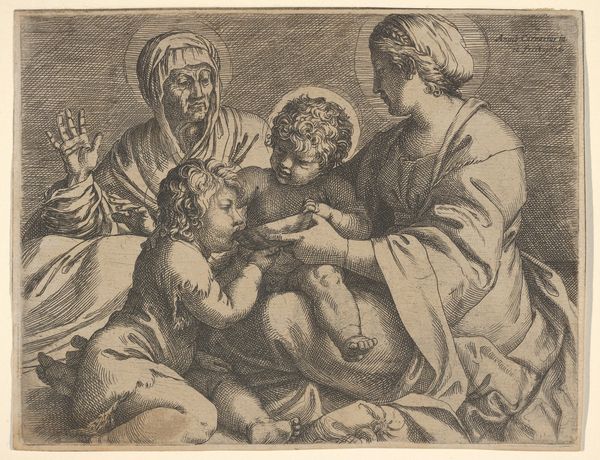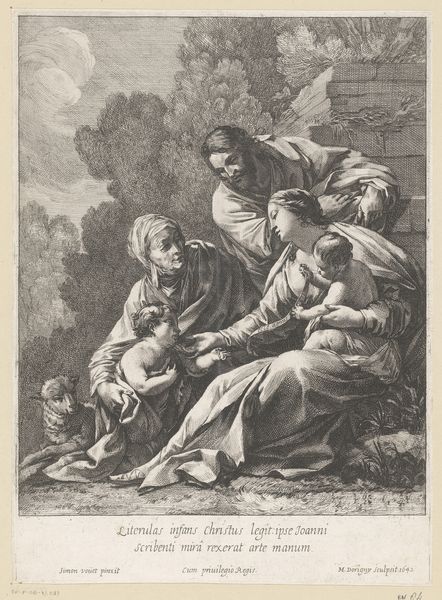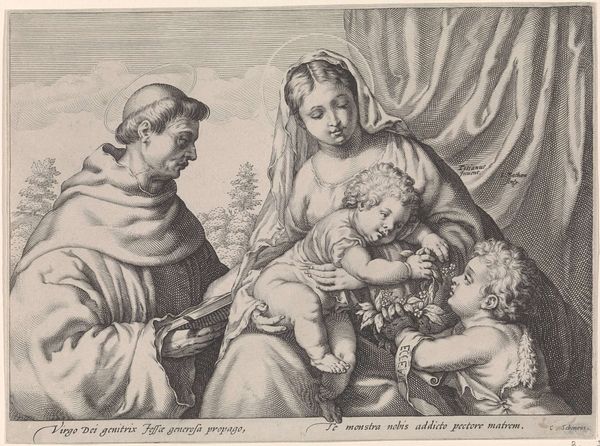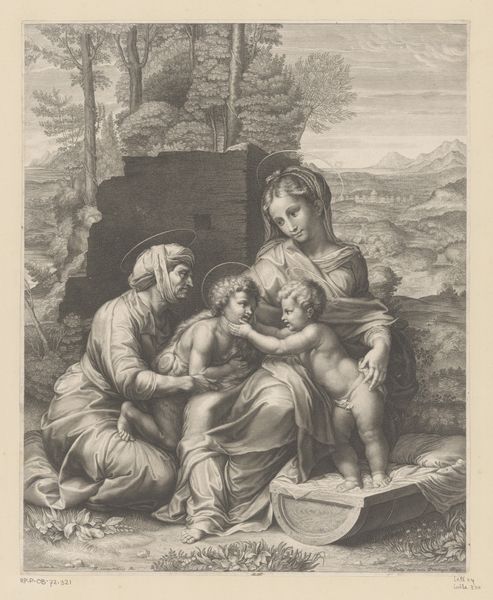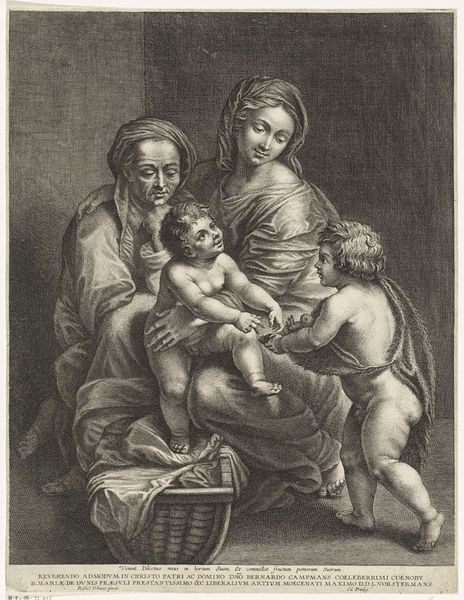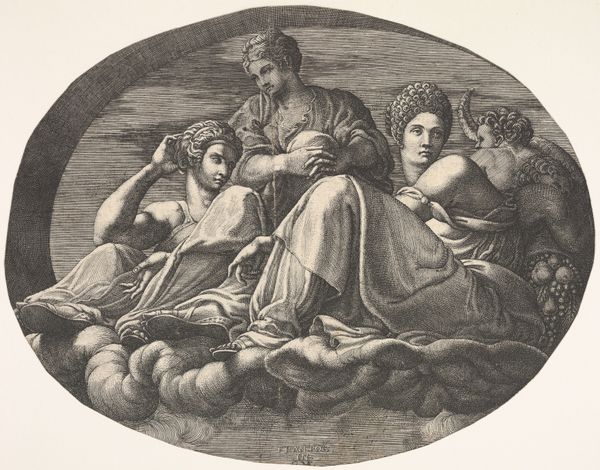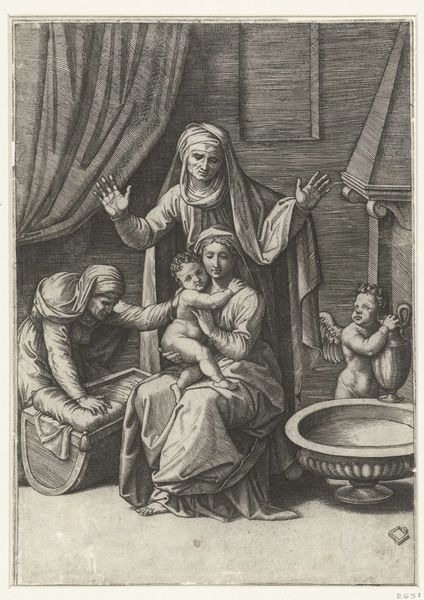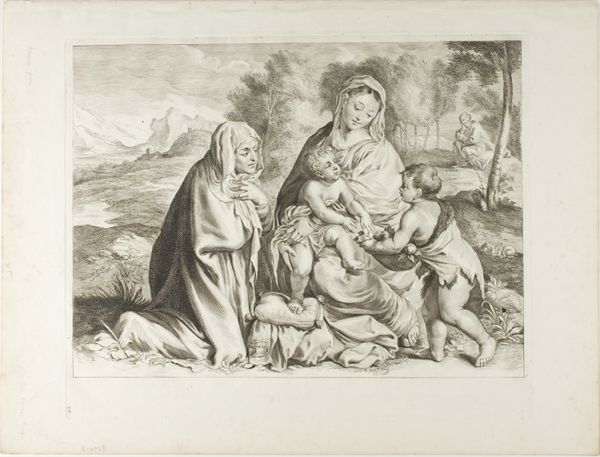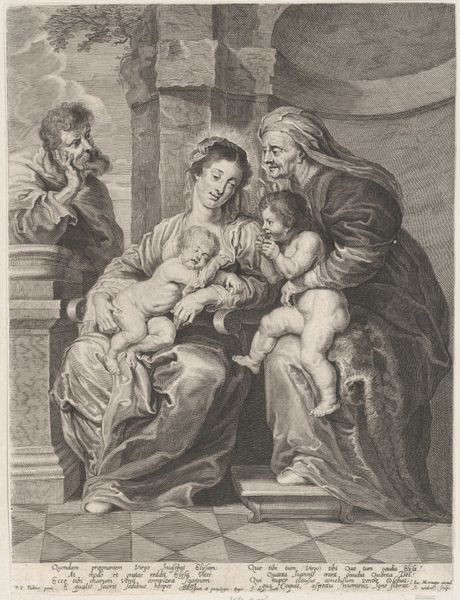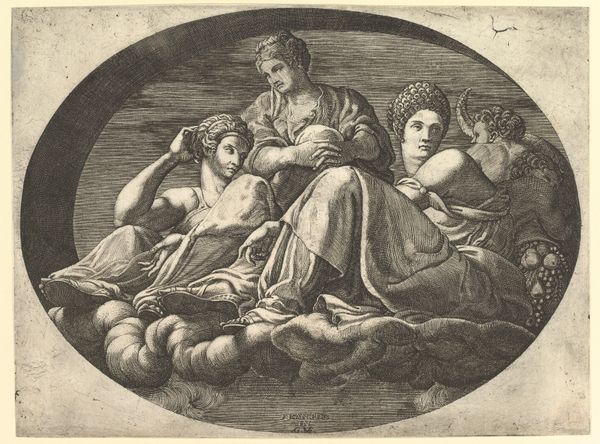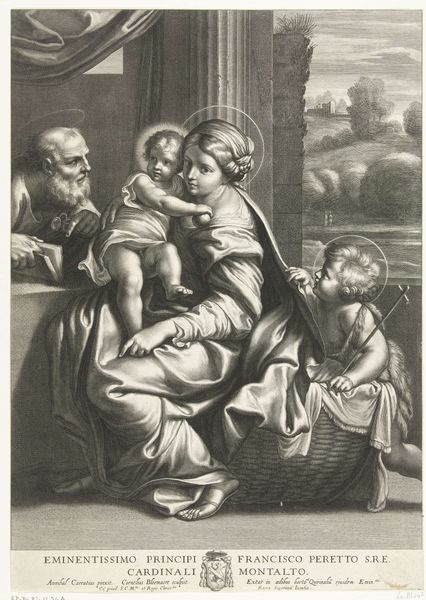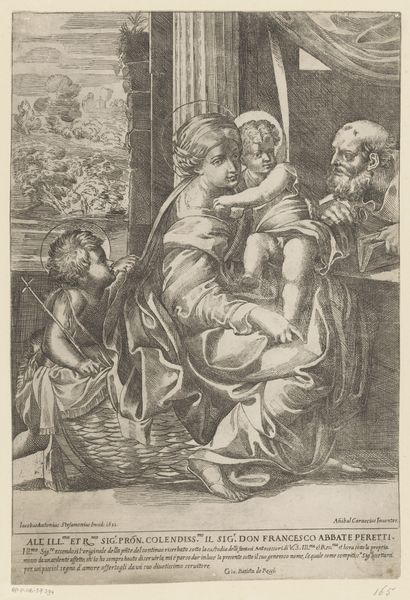
print, engraving
#
portrait
#
baroque
# print
#
figuration
#
history-painting
#
engraving
Dimensions: plate: 16.2 × 19.5 cm (6 3/8 × 7 11/16 in.) sheet: 17.1 × 20.5 cm (6 3/4 × 8 1/16 in.)
Copyright: National Gallery of Art: CC0 1.0
Curator: This engraving, possibly dating back to 1640, is titled "The Holy Family with Saint Anne" and attributed to Louis Testelin. Immediately, I'm drawn into its intricate detailing—a true testament to the Baroque style. Editor: Oh, my goodness, look at those little baby curls! And Saint Anne has this quietly amused expression, like she knows something we don't. The whole composition has this sort of peaceful intimacy, you know? Curator: The placement of Saint Anne and Mary does much to inform the familial dynamic, and that dynamic is in conversation with contemporary issues such as the rise of patriarchal dominance in domestic relationships and also the prevalence of women within artistic academies such as The Royal Academy of Painting and Sculpture Editor: It does! And thinking of academies makes me consider this print from an artist’s perspective: that delicate line work on the drapery! I can almost feel the fabric. It makes me wonder what sort of tools Testelin used. You can also clearly see some artist mistakes and corrections along the bottom of the engraving near Testelin's signature. I love the imperfection because it means I am holding and observing art that was personally created. Curator: Indeed. His command of the engraving process is exceptional, especially given how engraving circulated images throughout Europe at the time, reinforcing particular religious and social ideologies. The use of figuration, a hallmark of history painting, certainly aligns this artwork with the power structures of its era. One could almost suggest it attempts to make a theological statement. Editor: Possibly, although, theological and academic statement aside, there’s something fundamentally human about the gaze Saint Anne directs to the virgin. There is so much tenderness and care present, and those considerations should hold equal significance with the political history. It does this artwork injustice, if you don't. Curator: A fair point; however, can we ever truly separate art from its socio-political context, and would that actually be desirable, particularly within patriarchal constructs? This piece acts as a reminder of this tension, in which beauty becomes intertwined with the complexities of religious expression, domestic order, and gender roles. Editor: Maybe we can't separate art, but we can feel it. And this one whispers of gentle moments and familial bonds, framed within a larger narrative, obviously. Curator: Indeed. It gives you pause.
Comments
No comments
Be the first to comment and join the conversation on the ultimate creative platform.
